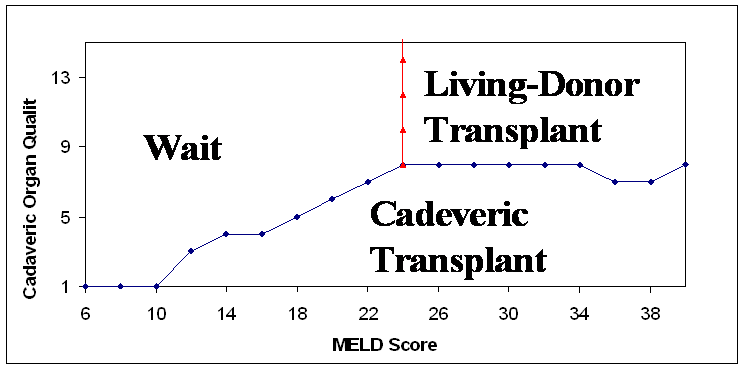Oguzhan Alagoz, PhD, University of Wisconsin-Madison, Madison, WI, Lisa Maillart, PhD, Case Western Reserve University, Cleveland, OH, Andrew Schaefer, PhD, University of Pittsburgh, Pittsburgh, PA, and Mark S. Roberts, MD, University of Pittsburgh, Pittsburgh, PA.
Purpose: Due a shortage of cadaveric organs, frequency of living-donor liver transplantations is on the rise. Despite this shortage, however, 45% of all cadaveric liver offers are initially declined by the transplant surgeon/patient. Our objective is to analyze the decision problem faced by patients who have access to both living-donor and cadaveric livers: should an offered cadaveric organ of a given quality be accepted or rejected? If a cadeveric organ offer is rejected or no-offer is made, should the patient opt to use the living-donor liver for transplantation now or continue to wait? This study extends our previous research that determines when to accept a cadaveric liver offer in the absence of a living-donor liver. Methods: Markov decision processes (MDPs) are analytic tools for sequential decision-making under uncertainty. We developed an infinite–horizon, discounted MDP model that determines whether to use a living-donor liver or accept a cadaveric liver offer. The state of the system is described by patient health and cadaveric organ quality. The Model for End-Stage Liver Disease (MELD) score, a risk prediction score, represents patient health. We estimate the transition probabilities using the natural history of liver disease and the national liver offer rates. We find the optimal policies using a policy iteration algorithm. Results: The figure shows an optimal policy based on a simplified definition of organ quality, where the quality is determined by donor characteristics such as age, gender, race...etc. Organs are ordered in decreasing quality, that is, Organ 1 is the best and Organ 14 is the worst organ. Note also that the higher the MELD score, the sicker the patient is. As expected, the optimal policy, a function of organ quality and patient health, consists of three action-regions. For example, when the patient has a MELD score of 26, the policy suggests that the patient should not accept cadaveric liver offers that have a lower quality than 8 (i.e., a higher value than 8) and use the living-donor organ for transplantation. Conclusions: Given functions that represent patient illness and organ quality, this analytic model can be used to determine the accept/decline decisions for living-donor and cadaveric organs.

See more of Poster Session III
See more of The 27th Annual Meeting of the Society for Medical Decision Making (October 21-24, 2005)

